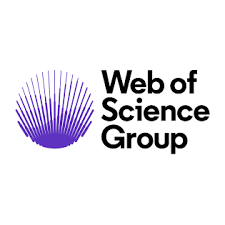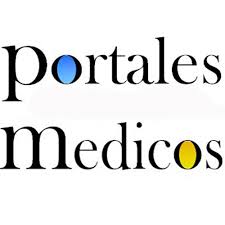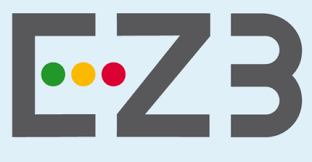Estatus epiléptico, revisión de un complejo problema neurológico y su abordaje multidisciplinario
Resumen
DOI: https://doi.org/10.53766/AcBio/2023.13.25.10
El estado epiléptico (EE) es una emergencia neurológica frecuente asociada con una alta morbimortalidad. De acuerdo con la nueva definición de ILAE 2017, EE resulta de la falla de los mecanismos responsables de la terminación o el inicio de las convulsiones, lo que lleva a convulsiones anormalmente prolongadas. La definición tiene diferentes puntos de tiempo para EE convulsivo, focal y de ausencia. Hay cambios en los receptores sinápticos que conducen a un estado más proconvulsivo y mayor riesgo de lesión cerebral y secuelas de larga duración. El manejo del EE debe incluir tres pilares: detener las convulsiones, estabilizar a los pacientes para evitar lesiones secundarias y tratar las causas subyacentes. El EE convulsivo se define a los 5 minutos y es una urgencia mayor. Las benzodiazepinas son el tratamiento inicial, y deben administrarse rápidamente ya una dosis adecuada. Fenitoína/fosfenitoína, levetiracetam y ácido valproico son opciones de evidencia para el tratamiento de segunda línea. Si el EE persiste, los fármacos anestésicos son probablemente la mejor opción de tratamiento de tercera línea, a pesar de la falta de evidencia. El midazolam suele ser la mejor opción inicial y se deben considerar los barbitúricos para los casos refractarios. El estado epiléptico no convulsivo tiene un enfoque inicial similar, con benzodiazepinas y agentes intravenosos (IV) de segunda línea, pero después de eso, la agresividad debe equilibrarse considerando el riesgo de lesión debido a convulsiones y complicaciones médicas causadas por un tratamiento agresivo. Por lo general, el mejor enfoque es el uso de fármacos antiepilépticos intravenosos secuenciales (la vía oral o por sonda son opciones si las opciones intravenosas no están disponibles). La monitorización EEG es crucial para el diagnóstico del SE no convulsivo, tras el control inicial del EE convulsivo y el control del tratamiento.
Recibido: 13/2/2022
Aceptado: 4/4/2023
Palabras clave
Texto completo:
PDFReferencias
Hesdorffer DC, Logroscino G, Cascino G, Annegers JF, Hauser WA. Incidence of status epilepticus in Rochester, Minnesota, 1965-1984. Neurology. 1998;50(3):735–741. doi: 10.1212/wnl.50.3.735. [PubMed] [CrossRef] [Google Scholar]
DeLorenzo RJ, Hauser WA, Towne AR, Boggs JG, Pellock JM, Penberthy L, et al. A prospective, population-based epidemiologic study of status epilepticus in Richmond, Virginia. Neurology. 1996;46(4):1029–1035. doi: 10.1212/wnl.46.4.1029. [PubMed] [CrossRef] [Google Scholar]
Trinka E, Cock H, Hesdorffer D, Rossetti AO, Scheffer IE, Shinnar S, et al. A definition and classification of status epilepticus - Report of the ILAE Task Force on Classification of Status Epilepticus. Epilepsia. 2015;56(10):1515–1523. doi: 10.1111/epi.13121. [PubMed] [CrossRef] [Google Scholar]
Nair PP, Kalita J, Misra UK. Status epilepticus: why, what, and how. J Postgrad Med. 2011;57(3):242–252. doi: 10.4103/0022-3859.81807. [PubMed] [CrossRef] [Google Scholar]
Theodore WH, Porter RJ, Albert P, Kelley K, Bromfield E, Devinsky O, et al. The secondarily generalized tonic-clonic seizure: a videotape analysis. Neurology. 1994;44(8):1403–1407. doi: 10.1212/wnl.44.8.1403. [PubMed] [CrossRef] [Google Scholar]
Treiman DM, Meyers PD, Walton NY, Collins JF, Colling C, Rowan AJ, et al. A comparison of four treatments for generalized convulsive status epilepticus. Veterans Affairs Status Epilepticus Cooperative Study Group. N Engl J Med. 1998;339(12):792–798. doi: 10.1056/NEJM199809173391202. [PubMed] [CrossRef] [Google Scholar]
Alldredge BK, Gelb AM, Isaacs SM, Corry MD, Allen F, Ulrich S, et al. A comparison of lorazepam, diazepam, and placebo for the treatment of out-of-hospital status epilepticus. N Engl J Med. 2001;345(9):631–637. doi: 10.1056/NEJMoa002141. [PubMed] [CrossRef] [Google Scholar]
Glauser T, Shinnar S, Gloss D, Alldredge B, Arya R, Bainbridge J, et al. Evidence-based guideline: treatment of convulsive status epilepticus in children and adults: report of the guideline Committee of the American Epilepsy Society. Epilepsy Curr. 2016;16(1):48–61. doi: 10.5698/1535-7597-16.1.48. [PMC free article] [PubMed] [CrossRef] [Google Scholar]
Silbergleit R, Durkalski V, Lowenstein D, Conwit R, Pancioli A, Palesch Y, et al. Intramuscular versus intravenous therapy for prehospital status epilepticus. N Engl J Med. 2012;366(7):591–600. doi: 10.1056/NEJMoa1107494. [PMC free article] [PubMed] [CrossRef] [Google Scholar]
Kapur J, Elm J, Chamberlain JM, Barsan W, Cloyd J, Lowenstein D, et al. Randomized trial of three anticonvulsant medications for status epilepticus. N Engl J Med. 2019;381(22):2103–2113. doi: 10.1056/NEJMoa1905795. [PMC free article] [PubMed] [CrossRef] [Google Scholar]
Mayer SA, Claassen J, Lokin J, Mendelsohn F, Dennis LJ, Fitzsimmons B-F. Refractory status epilepticus: frequency, risk factors, and impact on outcome. Arch Neurol. 2002;59(2):205–210. doi: 10.1001/archneur.59.2.205. [PubMed] [CrossRef] [Google Scholar]
Holtkamp M, Othman J, Buchheim K, Meierkord H. Predictors and prognosis of refractory status epilepticus treated in a neurological intensive care unit. J Neurol Neurosurg Psychiatry. 2005;76(4):534–539. doi: 10.1136/jnnp.2004.041947. [PMC free article] [PubMed] [CrossRef] [Google Scholar]
Abend NS, Dlugos DJ. Treatment of refractory status epilepticus: literature review and a proposed protocol. Pediatr Neurol. 2008;38(6):377–390. doi: 10.1016/j.pediatrneurol.2008.01.001. [PubMed] [CrossRef] [Google Scholar]
Ferlisi M, Hocker S, Grade M, Trinka E, Shorvon S, International Steering Committee of the StEp Audit Preliminary results of the global audit of treatment of refractory status epilepticus. Epilepsy Behav. 2015;49:P318–P324. doi: 10.1016/j.yebeh.2015.04.010. [PubMed] [CrossRef] [Google Scholar]
Mirrakhimov AE, Voore P, Halytskyy O, Khan M, Ali AM. Propofol infusion syndrome in adults: a clinical update. Crit Care Res Pract. 2015;2015:260385–260385. doi: 10.1155/2015/260385. [PMC free article] [PubMed] [CrossRef] [Google Scholar]
Rossetti AO, Logroscino G, Bromfield EB. Refractory status epilepticus: effect of treatment aggressiveness on prognosis. Arch Neurol. 2005;62(11):1698–1702. doi: 10.1001/archneur.62.11.1698. [PubMed] [CrossRef] [Google Scholar]
Zeiler FA, Teitelbaum J, Gillman LM, West M. NMDA antagonists for refractory seizures. Neurocrit Care. 2014;20(3):502–513. doi: 10.1007/s12028-013-9939-6. [PubMed] [CrossRef] [Google Scholar]
Ferlisi M, Shorvon S. The outcome of therapies in refractory and super-refractory convulsive status epilepticus and recommendations for therapy. Brain. 2012;135(8):2314–2328. doi: 10.1093/brain/aws091. [PubMed] [CrossRef] [Google Scholar]
Brophy GM, Bell R, Claassen J, Alldredge B, Bleck TP, Glauser T, et al. Guidelines for the evaluation and management of status epilepticus. Neurocrit Care. 2012;17(1):3–23. doi: 10.1007/s12028-012-9695-z. [PubMed] [CrossRef] [Google Scholar]
DeLorenzo RJ, Waterhouse EJ, Towne AR, Boggs JG, Ko D, DeLorenzo GA, et al. Persistent nonconvulsive status epilepticus after the control of convulsive status epilepticus. Epilepsia. 1998;39(8):833–840. doi: 10.1111/j.1528-1157.1998.tb01177.x. [PubMed] [CrossRef] [Google Scholar]
Nabbout R, Mazzuca M, Hubert P, Peudennier S, Allaire C, Flurin V, et al. Efficacy of ketogenic diet in severe refractory status epilepticus initiating fever induced refractory epileptic encephalopathy in school age children (FIRES) Epilepsia. 2010;51(10):2033–2037. doi: 10.1111/j.1528-1167.2010.02703.x. [PubMed] [CrossRef] [Google Scholar]
Nam SH, Lee BL, Lee CG, Yu HJ, Joo EY, Lee J, et al. The role of ketogenic diet in the treatment of refractory status epilepticus. Epilepsia. 2011;52(11):e181–e184. doi: 10.1111/j.1528-1167.2011.03289.x. [PubMed] [CrossRef] [Google Scholar]
Alexopoulos A, Lachhwani DK, Gupta A, Kotagal P, Harrison AM, Bingaman W, et al. Resective surgery to treat refractory status epilepticus in children with focal epileptogenesis. Neurology. 2005;64(3):567–570. doi: 10.1212/01.WNL.0000150580.40019.63. [PubMed] [CrossRef] [Google Scholar]
KEERk P, Tichý M, Belsan T, Zámecník J, Paulas L, Faladová L, et al. Life-saving epilepsy surgery for status epilepticus caused by cortical dysplasia. Epileptic Disord. 2002;4(3):203–208. [PubMed] [Google Scholar]
De Herdt V, Waterschoot L, Vonck K, Dermaut B, Verhelst H, Van Coster R, et al. Vagus nerve stimulation for refractory status epilepticus. Eur J Paediatr Neurol. 2009;13(3):P286–P289. doi: 10.1016/j.ejpn.2008.05.004. [PubMed] [CrossRef] [Google Scholar]
Sierra-Marcos A, Maestro I, Rodríguez-Osorio X, Miró J, Donaire A, Aparicio J, et al. Successful outcome of episodes of status epilepticus after vagus nerve stimulation: a multicenter study. Eur J Neurol. 2012;19(9):1219–1223. doi: 10.1111/j.1468-1331.2012.03707.x. [PubMed] [CrossRef] [Google Scholar]
Yazdi JS, Schumaker JA. Treatment of refractory status epilepticus with vagus nerve stimulator in an elderly patient. World Neurosurg. 2016;95(620):e1–e7. doi: 10.1016/j.wneu.2016.08.017. [PubMed] [CrossRef] [Google Scholar]
Valentín A, Nguyen HQ, Skupenova AM, Agirre-Arrizubieta Z, Jewell S, Mullatti N,et al. Centromedian thalamic nuclei deep brain stimulation in refractory status epilepticus. Brain Stimul. 2012;5(4):P594–P598. doi: 10.1016/j.brs.2011.10.002. [PubMed] [CrossRef] [Google Scholar]
Lee C-Y, Lim S-N, Wu T, Lee S-T. Successful treatment of refractory status epilepticus using anterior thalamic nuclei deep brain stimulation. World Neurosurg. 2017;99:14–18. doi: 10.1016/j.wneu.2016.11.097. [PubMed] [CrossRef] [Google Scholar]
Liu A, Pang T, Herman S, Pascual-Leone A, Rotenberg A. Transcranial magnetic stimulation for refractory focal status epilepticus in the intensive care unit. Seizure. 2013;22(10):P893–P896. doi: 10.1016/j.seizure.2013.06.014. [PMC free article] [PubMed] [CrossRef] [Google Scholar]
VanHaerents S, Herman ST, Pang T, Pascual-Leone A, Shafi MM. Repetitive transcranial magnetic stimulation; A cost-effective and beneficial treatment option for refractory focal seizures. Clin Neurophysiol. 2015;126(9):1840–1842. doi: 10.1016/j.clinph.2014.12.004. [PMC free article] [PubMed] [CrossRef] [Google Scholar]
Zeiler FA, Matuszczak M, Teitelbaum J, Gillman LM, Kazina CJ. Magnesium sulfate for non-eclamptic status epilepticus. Seizure. 2015;32:P100–P108. doi: 10.1016/j.seizure.2015.09.017. [PubMed] [CrossRef] [Google Scholar]
Rosemergy I, Adler J, Psirides A. Cannabidiol oil in the treatment of super refractory status epilepticus. A case report. Seizure. 2016;35:P56–P58. doi: 10.1016/j.seizure.2016.01.009. [PubMed] [CrossRef] [Google Scholar]
Legriel S, Lemiale V, Schenck M, Chelly J, Laurent V, Daviaud F, et al. Hypothermia for neuroprotection in convulsive status epilepticus. N Engl J Med. 2016;375(25):2457–2467. doi: 10.1056/NEJMoa1608193. [PubMed] [CrossRef] [Google Scholar]
Horváth L, Fekete I, Molnár M, Válóczy R, Márton S, Fekete K. The outcome of status epilepticus and long-term follow-up. Front Neurol. 2019;10:427–427. doi: 10.3389/fneur.2019.00427. [PMC free article] [PubMed] [CrossRef] [Google Scholar]
Alvarez V, Westover MB, Drislane FW, Dworetzky BA, Curley D, Lee JW, et al. Evaluation of a clinical tool for early etiology identification in status epilepticus. Epilepsia. 2014;55(12):2059–2068. doi: 10.1111/epi.12852. [PMC free article] [PubMed] [CrossRef] [Google Scholar]
Davis R, Dalmau J. Autoimmunity, seizures, and status epilepticus. Epilepsia. 2013;54(6) 6:46–49. doi: 10.1111/epi.12276. [PMC free article] [PubMed] [CrossRef] [Google Scholar]
Fung EL, Fung BB. Subcommittee on the Consensus Statement of the Hong Kong Epilepsy Society. Review and update of the Hong Kong Epilepsy Guideline on status epilepticus. Hong Kong Med J. 2017;23(1):67–73. doi: 10.12809/hkmj166025. [PubMed] [CrossRef] [Google Scholar]
Hirsch LJ, Gaspard N, van Baalen A, Nabbout R, Demeret S, Loddenkemper T, et al. Proposed consensus definitions for new-onset refractory status epilepticus (NOEER), febrile infection-related epilepsy syndrome (FIRES), and related conditions. Epilepsia. 2018;59(4):739–744. doi: 10.1111/epi.14016. [PubMed] [CrossRef] [Google Scholar]
Gaspard N, Hirsch LJ, Sculier C, Loddenkemper T, van Baalen A, Lancrenon J, et al. New-onset refractory status epilepticus (NOEER) and febrile infection-related epilepsy syndrome (FIRES): state of the art and perspectives. Epilepsia. 2018;59(4):745–752. doi: 10.1111/epi.14022. [PubMed] [CrossRef] [Google Scholar]
Reuber M, Pukrop R, Mitchell AJ, Bauer J, Elger CE. Clinical significance of recurrent psychogenic nonepileptic seizure status. J Neurol. 2003;250(11):1355–1362. doi: 10.1007/s00415-003-0224-z. [PubMed] [CrossRef] [Google Scholar]
Seneviratne U, Low ZM, Low ZX, Hehir A, Paramaswaran S, Foong M, et al. Medical health care utilization cost of patients presenting with psychogenic nonepileptic seizures. Epilepsia. 2019;60(2):349–357. doi: 10.1111/epi.14625. [PubMed] [CrossRef] [Google Scholar]
De Paola L, Terra VC, Silvado CE, Teive HAG, Palmini A, Valente KD, et al. Improving first responders' psychogenic nonepileptic seizures diagnosis accuracy: development and validation of a 6-item bedside diagnostic tool. Epilepsy Behav. 2016;54:P40–P46. doi: 10.1016/j.yebeh.2015.10.025. [PubMed] [CrossRef] [Google Scholar]
Zaccara G, Citerio G, Del Gaudio A, Ferlisi M, Pugliese FR, Toni D. Clinical pathways of epileptic seizures and status epilepticus: results from a survey in Italy. Neurol Sci. 2020;41(6):1571–1575. doi: 10.1007/s10072-020-04270-3. [PMC free article] [PubMed] [CrossRef] [Google Scholar]
Husain AM, Horn GJ, Jacobson MP. Non-convulsive status epilepticus: usefulness of clinical features in selecting patients for urgent EEG. J Neurol Neurosurg Psychiatry. 2003;74(2):189–191. doi: 10.1136/jnnp.74.2.189. [PMC free article] [PubMed] [CrossRef] [Google Scholar]
Kaplan PW. The clinical features, diagnosis, and prognosis of nonconvulsive status epilepticus. Neurologist. 2005;11(6):348–361. doi: 10.1097/01.nrl.0000162954.76053.d2. [PubMed] [CrossRef] [Google Scholar]
Meierkord H, Holtkamp M. Non-convulsive status epilepticus in adults: clinical forms and treatment. Lancet Neurol. 2007;6(4):P329–P339. doi: 10.1016/S1474-4422(07)70074-1. [PubMed] [CrossRef] [Google Scholar]
Pinto LF, Gilmore EJ, Petroff OA, Sivaraju A, Rampal N, Hirsch LJ, et al. Cyclic seizures in critically ill patients: clinical correlates, DC recordings and outcomes. Clin Neurophysiol. 2017;128(6):1083–1090. doi: 10.1016/j.clinph.2017.01.015. [PubMed] [CrossRef] [Google Scholar]
Kurtz P, Gaspard N, Wahl AS, Bauer RM, Hirsch LJ, Wunsch H, et al. Continuous electroencephalography in a surgical intensive care unit. Intensive Care Med. 2014;40(2):228–234. doi: 10.1007/s00134-013-3149-8. [PubMed] [CrossRef] [Google Scholar]
Rosenthal ES. Seizures, status epilepticus, and continuous EEG in the intensive care unit. Continuum (Minneap Minn) 2021;27(5):1321–1343. doi: 10.1212/CON.0000000000001012. [PubMed] [CrossRef] [Google Scholar]
Baker AM, Yasavolian MA, Arandi NR. Nonconvulsive status epilepticus: overlooked and undertreated. Emerg Med Pract. 2019;21(10):1–24. [PubMed] [Google Scholar]
Trinka E, Leitinger M. Which EEG patterns in coma are nonconvulsive status epilepticus? Epilepsy Behav. 2015;49:P203–P222. doi: 10.1016/j.yebeh.2015.05.005. [PubMed] [CrossRef] [Google Scholar]
Leitinger M, Trinka E, Gardella E, Rohracher A, Kalss G, Qerama E, et al. Diagnostic accuracy of the Salzburg EEG criteria for non-convulsive status epilepticus: a retrospective study. Lancet Neurol. 2016;15(10):P1054–P1062. doi: 10.1016/S1474-4422(16)30137-5. [PubMed] [CrossRef] [Google Scholar]
Domínguez AG, Montero RCM, Cid AD, Mazarro AJP, Bailly-Bailliere IR, Landete IMS, et al. Salzburg criteria, a useful tool in non-convulsive status epilepticus diagnosis: a retrospective study. Clin EEG Neurosci. 2021;52(6):422–426. doi: 10.1177/1550059421991710. [PubMed] [CrossRef] [Google Scholar]
Hirsch LJ, Fong MWK, Leitinger M, LaRoche SM, Beniczky S, Abend NS, et al. American Clinical Neurophysiology Society's Standardized Critical Care EEG Terminology: 2021 version. J Clin Neurophysiol. 2021;38(1):1–29. doi: 10.1097/WNP.0000000000000806. [PMC free article] [PubMed] [CrossRef] [Google Scholar]
Towne AR, Pellock JM, Ko D, DeLorenzo RJ. Determinants of mortality in status epilepticus. Epilepsia. 1994;35(1):27–34. doi: 10.1111/j.1528-1157.1994.tb02908.x. [PubMed] [CrossRef] [Google Scholar]
Neligan A, Shorvon SD. Prognostic factors, morbidity and mortality in tonic-clonic status epilepticus: a review. Epilepsy Res. 2011;93(1):1–10. doi: 10.1016/j.eplepsyres.2010.09.003. [PubMed] [CrossRef] [Google Scholar] 58. Cheng JY. Latency to treatment of status epilepticus is associated with mortality and functional status. J Neurol Sci. 2016;370:P290–P295. doi: 10.1016/j.jns.2016.10.004. [PubMed] [CrossRef] [Google Scholar]
Pohlmann-Eden B, Hoch DB, Cochius JI, Chiappa KH. Periodic lateralized epileptiform discharges--a critical review. J Clin Neurophysiol. 1996;13(6):519–530. doi: 10.1097/00004691-199611000-00007. [PubMed] [CrossRef] [Google Scholar]
Struck AF, Westover MB, Hall LT, Deck GM, Cole AJ, Rosenthal ES. Metabolic correlates of the ictal-interictal continuum: FDG-PET during continuous EEG. Neurocrit Care. 2016;24(3):324–331. doi: 10.1007/s12028-016-0245-y. [PMC free article] [PubMed] [CrossRef] [Google Scholar]
Vespa P, Tubi M, Claassen J, Buitrago-Blanco M, McArthur D, Velazquez AG, et al. Metabolic crisis occurs with seizures and periodic discharges after brain trauma. Ann Neurol. 2016;79(4):579–590. doi: 10.1002/ana.24606. [PubMed] [CrossRef] [Google Scholar]
Chong DJ, Hirsch LJ. Which EEG patterns warrant treatment in the critically ill? Reviewing the evidence for treatment of periodic epileptiform discharges and related patterns. J Clin Neurophysiol. 2005;22(2):79–91. doi: 10.1097/01.wnp.0000158699.78529.af. [PubMed] [CrossRef] [Google Scholar]
Kaplan PW, Duckworth J. Confusion and SIRPIDs regress with parenteral lorazepam. Epileptic Disord. 2011;13(3):291–294. doi: 10.1684/epd.2011.0463. [PubMed] [CrossRef] [Google Scholar]
Lee JW. EEG in the ICU: what should one treat, what not? Epileptologie. 2012;29:210–217. [Google Scholar]
Bravo P, Vaddiparti A, Hirsch LJ. Pharmacotherapy for nonconvulsive seizures and nonconvulsive status epilepticus. Drugs. 2021;81(7):749–770. doi: 10.1007/s40265-021-01502-4. [PubMed] [CrossRef] [Google Scholar]
Claassen J, Mayer SA, Kowalski RG, Emerson RG, Hirsch LJ. Detection of electrographic seizures with continuous EEG monitoring in critically ill patients. Neurology. 2004;62(10):1743–1748. doi: 10.1212/01.wnl.0000125184.88797.62. [PubMed] [CrossRef] [Google Scholar]
Abend NS, Dlugos DJ, Hahn CD, Hirsch LJ, Herman ST. Use of EEG monitoring and management of non-convulsive seizures in critically ill patients: a survey of neurologists. Neurocrit Care. 2010;12(3):382–389. doi: 10.1007/s12028-010-9337-2. [PMC free article] [PubMed] [CrossRef] [Google Scholar]
Vespa PM, Nuwer MR, Nenov V, Ronne-Engstrom E, Hovda DA, Bergsneider M, et al. Increased incidence and impact of nonconvulsive and convulsive seizures after traumatic brain injury as detected by continuous electroencephalographic monitoring. J Neurosurg. 1999;91(5):750–760. doi: 10.3171/jns.1999.91.5.0750. [PMC free article] [PubMed] [CrossRef] [Google Scholar]
Pandian JD, Cascino GD, So EL, Manno E, Fulgham JR. Digital video-electroencephalographic monitoring in the neurological-neurosurgical intensive care unit: clinical features and outcome. Arch Neurol. 2004;61(7):1090–1094. doi: 10.1001/archneur.61.7.1090. [PubMed] [CrossRef] [Google Scholar]
Vespa PM, Miller C, McArthur D, Eliseo M, Etchepare M, Hirt D, et al. Nonconvulsive electrographic seizures after traumatic brain injury result in a delayed, prolonged increase in intracranial pressure and metabolic crisis. Crit Care Med. 2007;35(12):2830–2836. doi: 10.1097/00003246-200712000-00023. [PMC free article] [PubMed] [CrossRef] [Google Scholar]
Krishnamurthy KB, Drislane FW. Depth of EEG suppression and outcome in barbiturate anesthetic treatment for refractory status epilepticus. Epilepsia. 1999;40(6):759–762. doi: 10.1111/j.1528-1157.1999.tb00775.x. [PubMed] [CrossRef] [Google Scholar]
Claassen J, Hirsch LJ, Emerson RG, Mayer SA. Treatment of refractory status epilepticus with pentobarbital, propofol, or midazolam: a systematic review. Epilepsia. 2002;43(2):146–153. doi: 10.1046/j.1528-1157.2002.28501.x. [PubMed] [CrossRef] [Google Scholar]
Vespa P. Continuous EEG monitoring for the detection of seizures in traumatic brain injury, infarction, and intracerebral hemorrhage: “to detect and protect” J Clin Neurophysiol. 2005;22(2):99–106. doi: 10.1097/01.wnp.0000154919.54202.e0. [PubMed] [CrossRef] [Google Scholar]
Lee JW, LaRoche S, Choi H, Ruiz AAR, Fertig E, Politsky JM, et al. Development and feasibility testing of a critical care EEG monitoring database for standardized clinical reporting and multicenter collaborative research. J Clin Neurophysiol. 2016;33(2):133–140. doi: 10.1097/WNP.0000000000000230. [PMC free article] [PubMed] [CrossRef] [Google Scholar]
Ruiz AR, Vlachy J, Lee JW, Gilmore EJ, Ayer T, Haider HA, et al. Association of periodic and rhythmic electroencephalographic patterns with seizures in critically Ill patients. JAMA Neurol. 2017;74(2):181–188. doi: 10.1001/jamaneurol.2016.4990. [PubMed] [CrossRef] [Google Scholar]
Kalamangalam GP, Pohlmann-Eden B. Ictal-interictal continuum. J Clin Neurophysiol. 2018;35(4):274–278. doi: 10.1097/WNP.0000000000000447. [PubMed] [CrossRef] [Google Scholar]
Hill CE, Blank LJ, Thibault D, Davis KA, Dahodwala N, Litt B, et al. Continuous EEG is associated with favorable hospitalization outcomes for critically ill patients. Neurology. 2019;92(1):e9–18. doi: 10.1212/WNL.0000000000006689. [PMC free article] [PubMed] [CrossRef] [Google Scholar]
Struck AF, Ustun B, Ruiz AR, Lee JW, LaRoche SM, Hirsch LJ, et al. Association of an electroencephalography-based risk score with seizure probability in hospitalized patients. JAMA Neurol. 2017;74(12):1419–1424. doi: 10.1001/jamaneurol.2017.2459. [PMC free article] [PubMed] [CrossRef] [Google Scholar]
Westover MB, Shafi MM, Bianchi MT, Moura LMVR, O'Rourke D, Rosenthal ES, et al. The probability of seizures during EEG monitoring in critically ill adults. Clin Neurophysiol. 2015;126(3):463–471. doi: 10.1016/j.clinph.2014.05.037. [PMC free article] [PubMed] [CrossRef] [Google Scholar]
Leitinger M, Beniczky S, Rohracher A, Gardella E, Kalss G, Qerama E, et al. Salzburg consensus criteria for non-convulsive status epilepticus--approach to clinical application. Epilepsy Behav. 2015;49:P158–P163. doi: 10.1016/j.yebeh.2015.05.007. [PubMed] [CrossRef] [Google Scholar]
DOI: https://www.doi.org/10.53766/AcBio/Se encuentra actualmente indizada en: | |||
 |  |  | |
  |  |  |  |
 |  |  |  |
 |  |  | |
![]()
Todos los documentos publicados en esta revista se distribuyen bajo una
Licencia Creative Commons Atribución -No Comercial- Compartir Igual 4.0 Internacional.
Por lo que el envío, procesamiento y publicación de artículos en la revista es totalmente gratuito.




